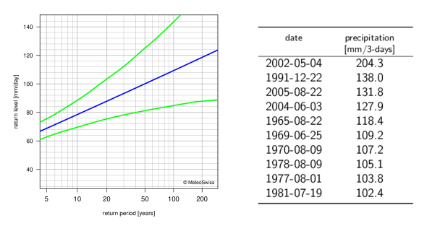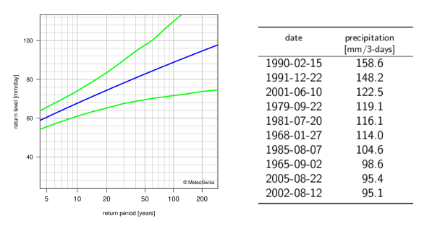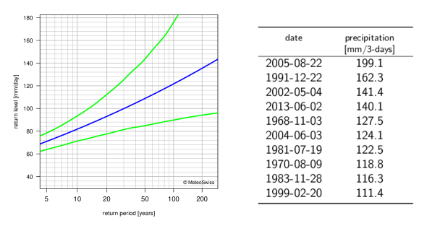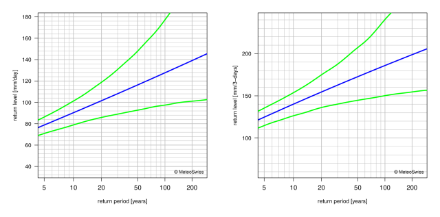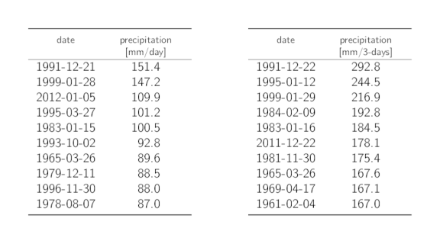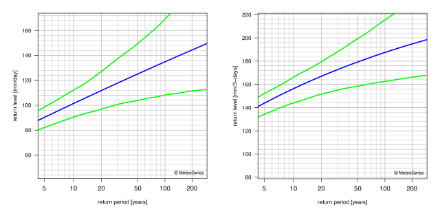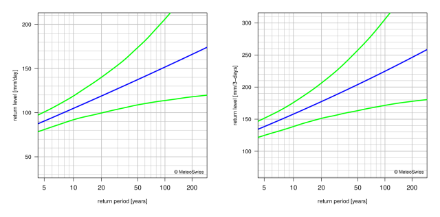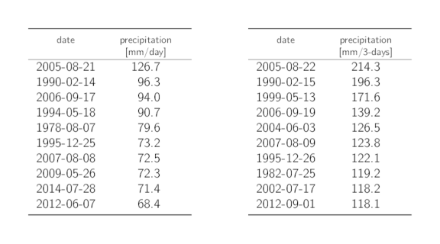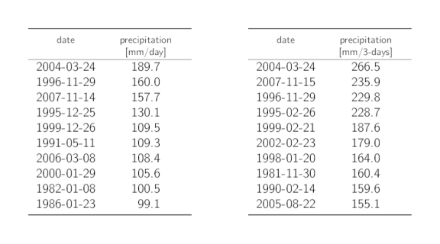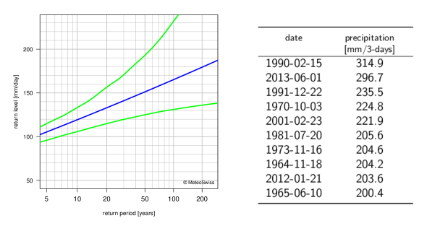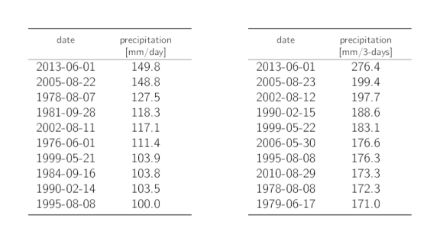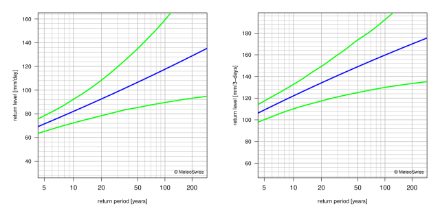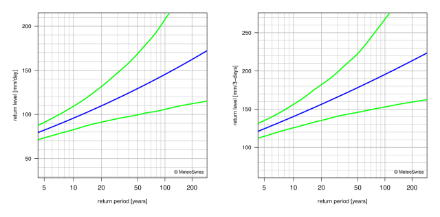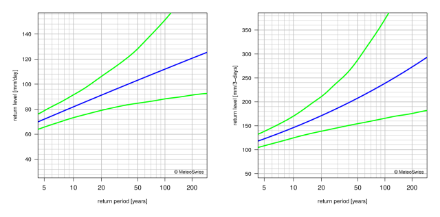Service Navigation
Search
Return periods of the largest 1, 2, 3, 4 and 5-day precipitation between 9 and 13 August 2002
The plots below show the return periods of the largest 1, 2, 3, 4 and 5-day precipitation sums between 9 and 13 August 2002. Except for station Kleine Scheidegg (western Alpine north slope) that measured a 3-day precipitation amount having a return period of 10 to 20 years (136.7 mm), the precipitation during this event was rare only at stations located in the eastern part of Switzerland, for which precipitation amounts corresponding to return periods of 10 to 50 years were measured.
The event was the most rare at station Teufen (eastern Alpine north slope), for which the largest 1, 2 and 3-day precipitation corresponds to a 10 to 50-year event (for respectively 104 mm/1day, 151.9 mm/2days and 161.4 mm/3days). At station Säntis (eastern Alpine north slope), the largest 1-day precipitation was also quite rare, corresponding to a 20 to 50-year event (140.1 mm).
Interestingly, the return periods of the 5-day precipitation and of the largest 4-day precipitation are lower than those of the largest 1, 2 and 3-day precipitation. This can be explained by the shift in time of the zone of maximum precipitation during the event, resulting in most stations measuring relatively large precipitation amounts during only one, two or three days instead of during the whole duration of the event.
Maps of the return periods (in years) of the largest 1, 2, 3, 4 and 5-day precipitation measured between 9 August 2002, 05:40 UTC and 14 August 2002, 05:40 UTC. The return periods are based on the generalized extreme value distribution estimated from the annual 1, 2, 3, 4 and 5-day precipitation maxima during the period 1961-2010. The size of the circles is proportional to the value of the return period. The filling of the circles indicates the reliability of the statistics: good (filled circle), questionable (circle with cross) and poor (empty circle).
Extreme value analyses for 1-day and 3-day precipitation
This section provides the extreme value analyses for some of the stations presented in the section Hyetographs. The statistics are based on the period 1961-2010. Return level plots of 1-day and 3-day precipitation maxima are shown when the statistics are reliable. When the statistics are not reliable or when the length of the records is too short, tables of the ten highest precipitation maxima for the period 1961-2014 or between the beginning of the measurements and 2014 are shown instead. In addition, PDFs of the extreme value analyses are given when the reliability of the results is good or questionable.
